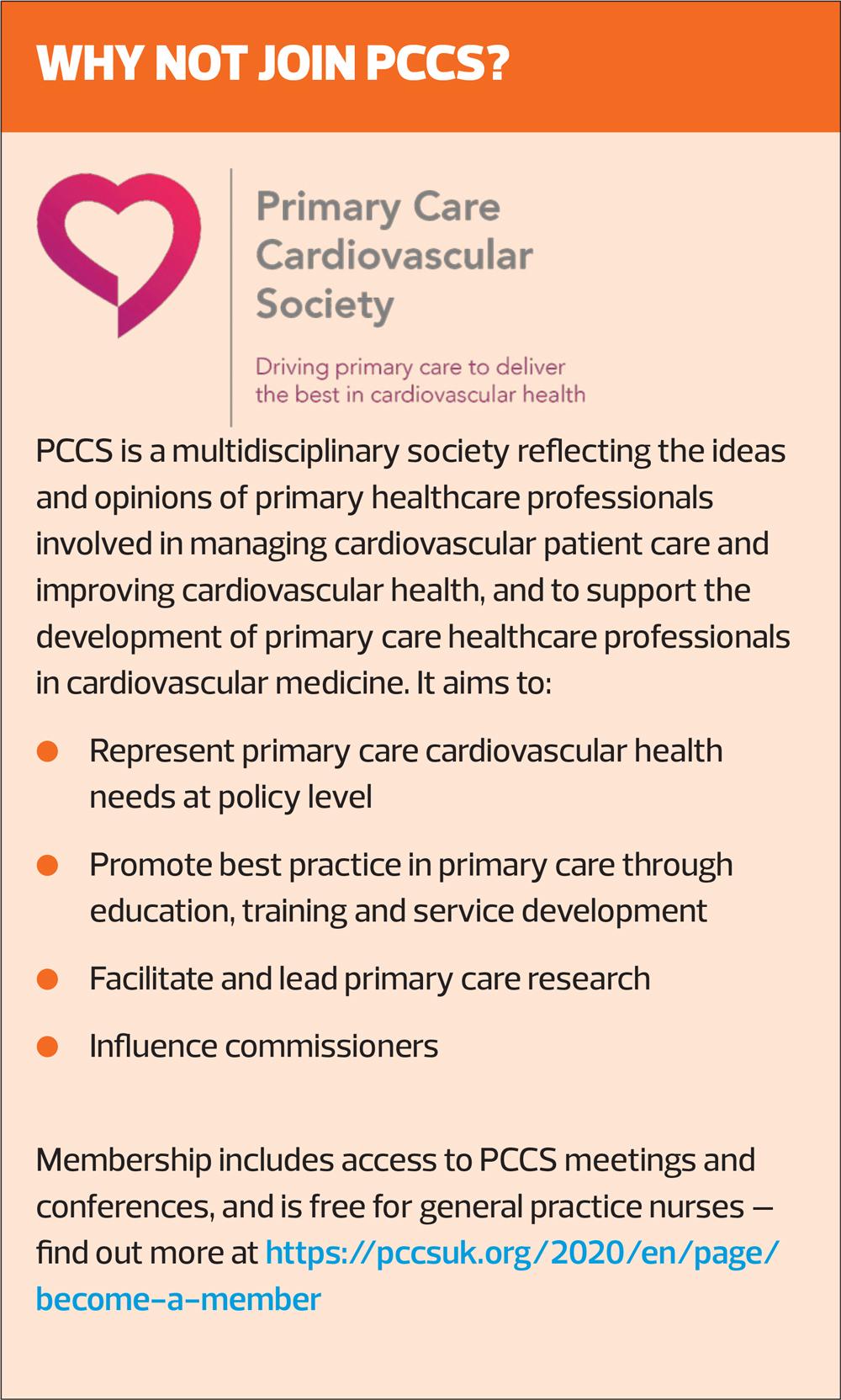NICE updates guidance on hypertension: what’s new?
MANDY GALLOWAY
MANDY GALLOWAY
Editor
Practice Nurse 2022;52(4):12-13
The COVID-19 pandemic has seriously impacted the routine diagnosis and management of people with hypertension, and this should now become an urgent practice priority – spurred on by the recent update to NICE guidance
The latest update to NICE guidelines on hypertension recommends the same blood pressure target, 140/90 mmHg, for people with and without existing cardiovascular disease, and to offer treatment to reduce BP and maintain it below target in everyone with hypertension under the age of 80.
For older people, aged 80 and over, a less stringent target should be used – 150/90 mmHg – and clinicians should also use their clinical judgement when treating people with frailty or multimorbidity.
The NICE guideline development committee found there was no ‘robust or consistent clinical benefit’ from using lower BP targets for people with cardiovascular disease, but has stressed the importance of maintaining BP below the target, not at it.
The committee has called for further research on targets for people aged over 80, because there was no evidence specifically for this group. What evidence there is was from mixed groups and was too limited to support a new practice recommendation.
There is also limited evidence that lower BP targets in people who have had a stroke reduced the risk of future strokes – but there was also evidence for the possible harms of lower targets.
Recommendations for antihypertensive drug treatment for patients with cardiovascular disease have not been changed because – in a limited review of evidence up to 2010 – there was no difference in clinically relevant outcomes between people with and without cardiovascular disease.
However, NICE recommends that condition-specific recommendations should be applied first (i.e. before those in the hypertension guideline) for people with acute coronary syndromes and chronic heart failure.
NICE has also dropped its recommendation (dating back to 2006) to use beta-blockers as a step 1 antihypertensive treatment in primary hypertension – they are now rarely used at this stage, and there is no established relationship between beta-blocker use in this group and a reduction in cardiovascular events.
For people with hypertension and type 2 diabetes, NICE has updated the guidance on starting treatment with an ACE inhibitor (except women with a possibility of becoming pregnant and people of Black African or African-Caribbean family origin). This recommendation has now been broadened to include the choice of an ACE inhibitor or an angiotensin II receptor blocker (ARB) – A-type drugs – because they are now cost- and clinically- equivalent.
As set out in the 2019 guideline, the threshold for initiating treatment is a 10% risk of a cardiovascular event in 10 years, which is expected to reduce the number of cardiovascular events by a third. Any cost increases (from additional prescribing) and savings (from the reduction in cardiovascular events) will fall in different sectors.
The recommendation is still to use QRISK2 to assess risk – even though the broader QRISK3 was published in 2018. Primary Care Cardiovascular Society President Dr Jim Moore explained: ‘The recommendation to use QRISK2 relates to the historical recommendations in the NICE Cardiovascular Disease: risk assessment and reduction, including lipid modification clinical guideline published in 2014 and last updated in 2016. The latter is currently in the process of being reviewed and CVD risk assessment tools will be part of that review.
‘In my opinion QRISK3 would be a more appropriate tool as it includes a wider range of possible risk factors to enable us to identify those most at risk of cardiovascular disease. QRISK 3 is still not embedded in many of the IT systems we commonly use in primary care though can be accessed online for those who wish to use it.’
CVD prevention and hypertension in particular have been highlighted as a priority for practices and primary care networks, and supported by the PCN DES. However, practices should not feel they need to identify and diagnose everyone with hypertension alone.
Dr Moore said: ‘The new Community Pharmacy contract provides an opportunity to work more closely with pharmacy colleagues who can undertake ambulatory blood pressure monitoring (ABPM), the gold standard for diagnosing hypertension. NICE recommends we should undertake an annual review of care for adults with hypertension (including Stage 1) annually and where appropriate this will include undertaking a formal assessment of CVD risk. Ideally people with diagnosed stage 1 hypertension who are not on treatment based on previous CVD risk estimation but who may now be eligible should be identified for early review.’
He added: ‘Sadly there is now good evidence that as a consequence of the pandemic the management of people with hypertension has been adversely affected, with modelling suggesting that this has had and will have significant consequences in terms of increased numbers of heart attacks and strokes. There is therefore an urgent need to address hypertension, along with CVD prevention, and make this a priority across all healthcare systems.
‘The practice nursing team has been – and going forward, will be – an essential part of the workforce in providing high quality care to people both at risk of and with cardiovascular disease.’
NICE NG136. Hypertension in adults: diagnosis and management; 2019, updated 18 March 2022. https://www.nice.org.uk/
guidance/ng136
Related articles
View all Articles
